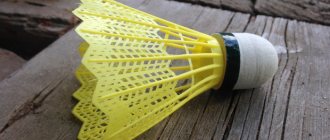Speech development in preschoolers
If your child has problems pronouncing words or individual sounds, then do not be lazy to work with him. Remember that the role of parents in this matter is great and no less significant than the role of a professional speech therapist. Imagine that the speech therapist and you are two separate palms that can only clap together together.
What is required from parents:
- Correctly and clearly pronounce words not only addressed to the child, but also spoken in his presence.
- As early as possible, start talking to him in separate, logically connected sentences.
- Follow all the speech therapist’s recommendations that he may give you to do outside of class.
- Don’t be lazy and do at least some gentle articulation gymnastics with your child several times a week.
- Correct your child when he pronounces a word incorrectly.
- Motivate the child to pronounce words. For example, pretending that you do not understand what his request is, when he is too lazy to say in words, but demands something from you with gestures.
- Regularly memorize simple rhymes, as well as tongue twisters and sayings with your children.
- Sing songs with your child.
- Try with all your might to teach your child the correct pronunciation of words and the correct construction of sentences during preschool age.
The last point, namely the grammar of speech of preschoolers, needs to be given great attention, otherwise the child will subsequently have certain difficulties at school.
Development of coherent speech in preschool children
We have already partially mentioned methods for developing coherent speech in preschoolers. This is communication in whole sentences and logically constructed phrases. When you walk with your child, pay attention to the phenomena of the surrounding world. If the baby is still very small, then tell us yourself. For example, “What a big house is ahead!”, “Look what a bright flower! It smells nice!”, “This is a road, cars and buses drive along it,” etc. You can ask an older child to compose such small stories himself. If he is lost, then help him by directing his thoughts with a question. For example, “What color is this flower? You like him?". Don’t let your child answer in monosyllables; ask them to give detailed answers: “This flower is yellow! It’s bright and that’s why I really like it.”
Games on the ability to use speech help this development:
- "Dialogue". Have some small talk over a cup of tea.
- "Interview". Let your child be the journalist who asks you questions, then switch roles.
- "Professions". Ask your child to talk about a profession.
- “Name the action.” Ask a question such as “what does snow do?” and ask the baby to answer with verbs: “falls, spins, melts.”
- “What happened next?” The adult begins the narration of the story, and the child will need to listen carefully and come up with a continuation.
The grammatical structure of speech in preschoolers
The formation of correct grammatical structure as early as possible is a very important aspect in the development of a child’s speech. If a child pronounces words incorrectly and does not know how to choose endings, then at school he will have big problems with grammar. Remember that kids write as they hear and, accordingly, hear as they speak! There are many tasks to develop the ability to coordinate nouns with adjectives and verbs, as well as to combine tenses, numbers and cases. For example, you can ask the child to name the same object in different forms (one apple, two apples, five apples). You can ask them to answer the questions “Which one?” about the subject. Which? Which?" (apple is green, crispy, dense, juicy). At the same time, pay attention to the endings and ask the child to correct himself if he pronounces them incorrectly.
A good exercise to develop the grammatical aspect of speech is “Make a story.” You can show your child a picture and ask him to make up a narrative story based on it, clearly pronouncing the endings. If difficulties arise, you can start with statements. That is, give the child a picture, read him a story based on it, asking him to remember, and only then write down the story in his words. It is considered normal if a child of 6-7 years old can come up with a story based on a picture without disturbing the subsequent presentation of the events in it. The use of additional ways of organizing beginnings, as well as different types of narration, can indicate high rates of development of the grammatical structure and creative thinking of a preschooler.
You can develop knowledge about the word-formation nest in almost any aspect of everyday life. For example, a child decides to look at the snow outside the window, ask him to name the snowflake in the plural and make a sentence with this word. Always remember this and try to talk to your children correctly as much as possible.
Speech of a 3-year-old child and delay in the development of the speech apparatus
At the age of 3 years, a child’s vocabulary ranges from 1000 words or more. The baby no longer just pronounces words, but can also do it correctly from a phonetic point of view and even form them into sentences. According to statistics, girls begin to speak earlier than boys, but all children are individual and there are no specific standards in this area.
If a child does not know or pronounce any words until the age of 3, or his vocabulary is too small, then a neurologist may diagnose a “lag in the development of the speech apparatus.” At this age of a child, this diagnosis should not frighten his parents, since with the right approach, speech can improve in just a few months. If there are no reasons for such a diagnosis from a health point of view, that is, the baby does not suffer from a disorder of the central nervous system, does not have developmental disabilities or other serious diseases, then you will be shown exercises to strengthen the muscles of the mouth.
To strengthen your mouth muscles, you must do the following:
- Eat solid foods more often, which must be chewed thoroughly.
- Invite the baby to blow and whistle. Buy him soap bubbles, a pipe, a whistle, or make a raft out of a cork or piece of foam plastic, which you need to blow on, lowering it into the water (playing a boat).
- Let your baby drink juice through a straw, asking him to suck in his cheeks as much as possible.
- Imitate the sounds of animals and objects around you. For example, you can “start the engine” by saying “trrrrrrrrr” or play “train” with the sound “chukhchukhchukh”.
- Regularly practice fine motor skills. Remember that the quality of your baby's speech is at the tip of his fingers. Therefore, there is never too much modeling from plasticine, playing with kinetic or regular sand, and painting with finger paints!
- Perform simple articulation gymnastics with your baby. A speech therapist or the Internet can tell you exercises for gymnastics. You can find, for example, a video on this topic and watch it with your baby. And then repeat the exercises you watched in front of the mirror.
If your baby has certain diseases or disorders of the central nervous system, then you will have to develop the speech apparatus together with your doctor. You may need to take certain medications, as well as use methods to stimulate the cerebral cortex.





